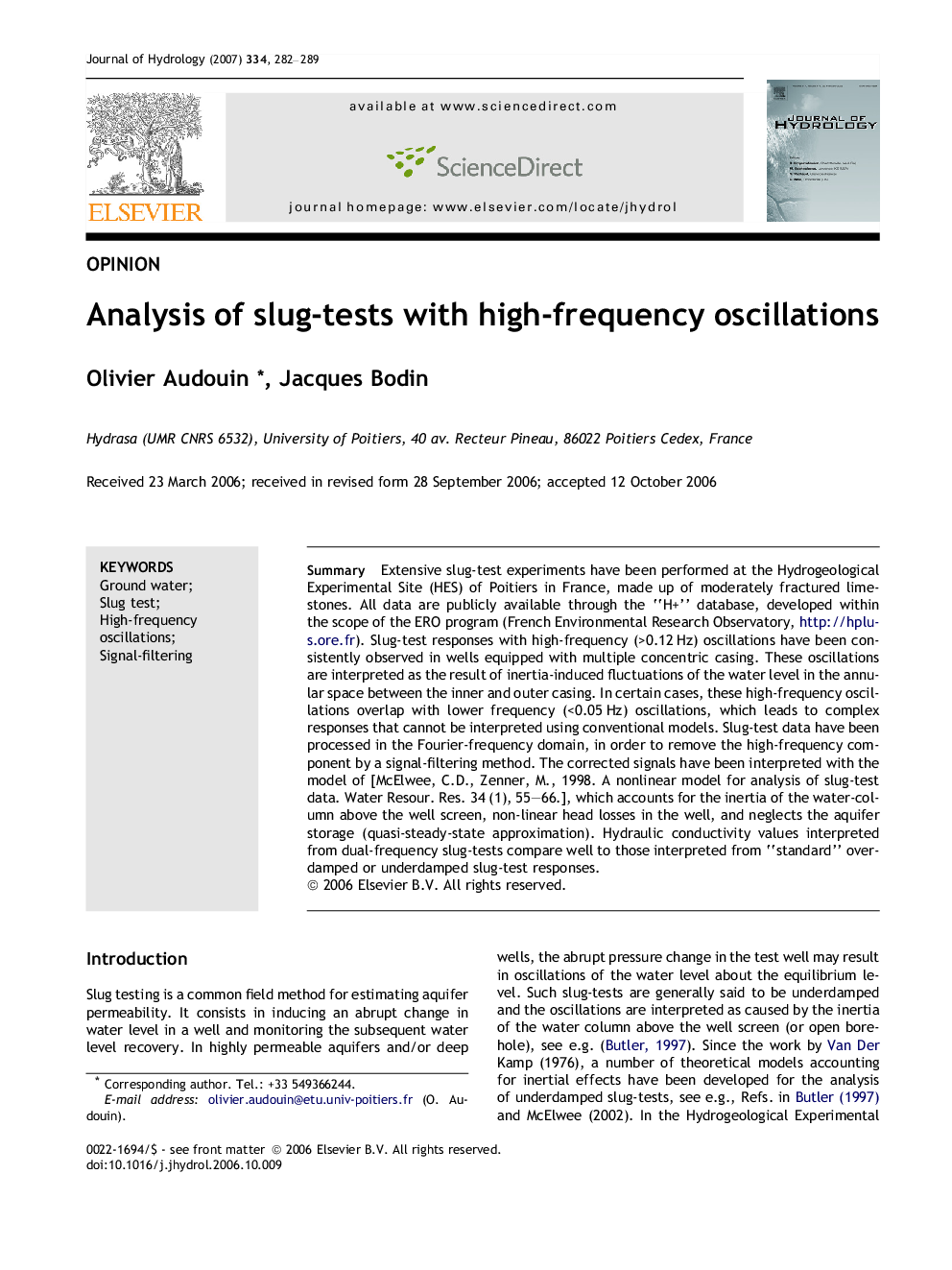| Article ID | Journal | Published Year | Pages | File Type |
|---|---|---|---|---|
| 4579933 | Journal of Hydrology | 2007 | 8 Pages |
SummaryExtensive slug-test experiments have been performed at the Hydrogeological Experimental Site (HES) of Poitiers in France, made up of moderately fractured limestones. All data are publicly available through the “H+” database, developed within the scope of the ERO program (French Environmental Research Observatory, http://hplus.ore.fr). Slug-test responses with high-frequency (>0.12 Hz) oscillations have been consistently observed in wells equipped with multiple concentric casing. These oscillations are interpreted as the result of inertia-induced fluctuations of the water level in the annular space between the inner and outer casing. In certain cases, these high-frequency oscillations overlap with lower frequency (<0.05 Hz) oscillations, which leads to complex responses that cannot be interpreted using conventional models. Slug-test data have been processed in the Fourier-frequency domain, in order to remove the high-frequency component by a signal-filtering method. The corrected signals have been interpreted with the model of [McElwee, C.D., Zenner, M., 1998. A nonlinear model for analysis of slug-test data. Water Resour. Res. 34 (1), 55–66.], which accounts for the inertia of the water-column above the well screen, non-linear head losses in the well, and neglects the aquifer storage (quasi-steady-state approximation). Hydraulic conductivity values interpreted from dual-frequency slug-tests compare well to those interpreted from “standard” overdamped or underdamped slug-test responses.
